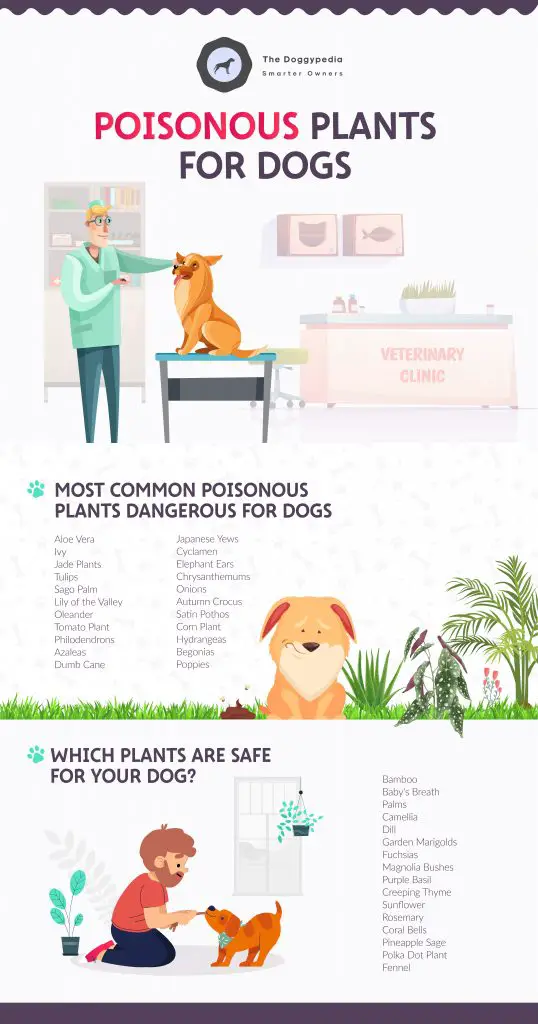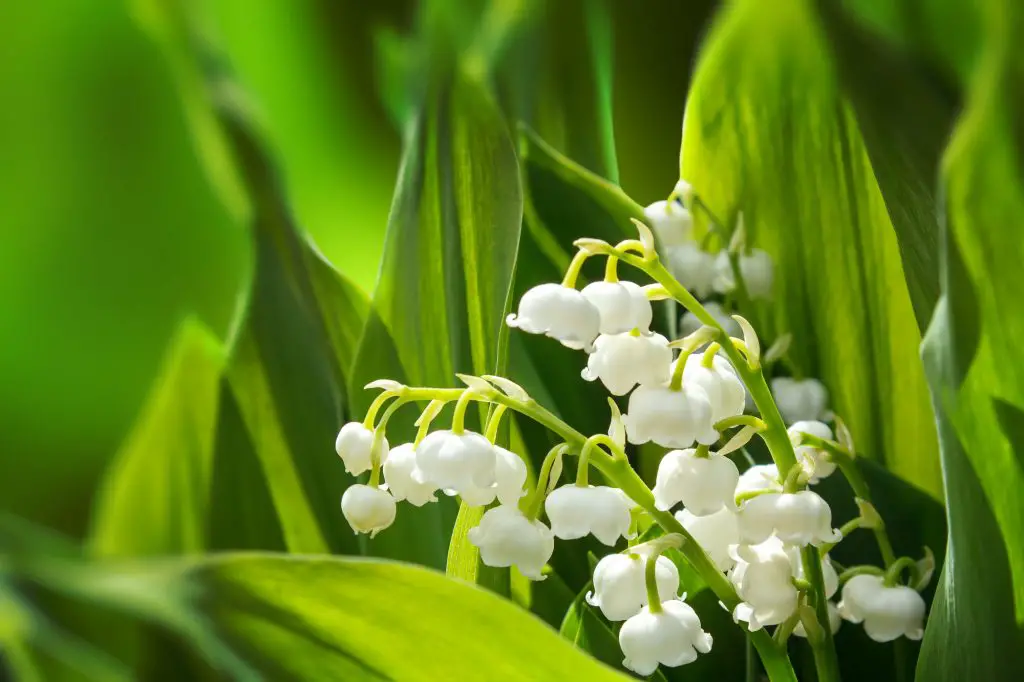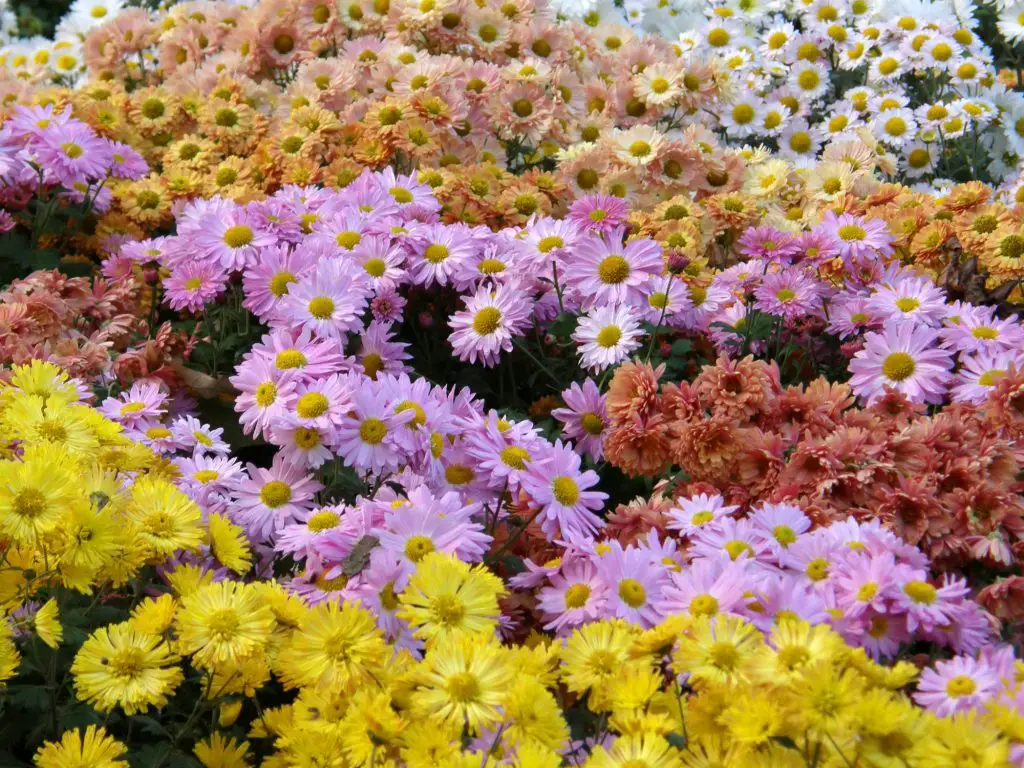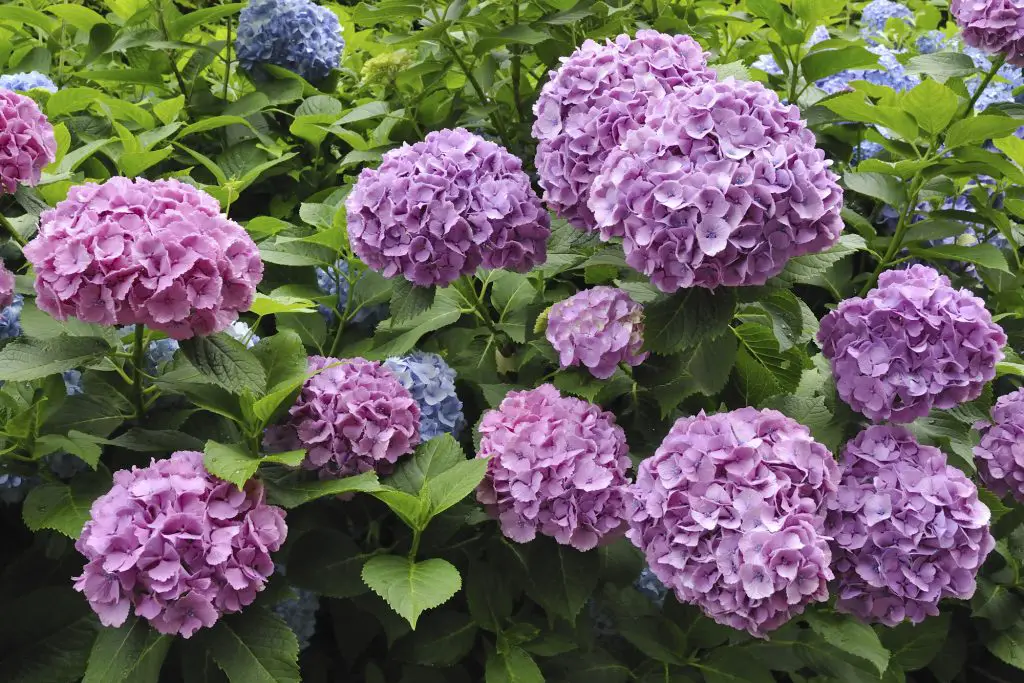Aug 25th 2020
Poisonous Plants for Dogs: How to Protect Your Dog from Common Toxic Plants
Rob Evans reached out to us from The Doggypedia to give us a more complete listing of poisonous plants for dogs. This is a follow up article to our most recent post. There is lots of important detail in this post so be sure to take notes.
There is a surprisingly large number of plants out there that are toxic to our furry friends. Many of these plants are commonly used in landscaping or even as houseplants!
When you’re bringing any new plant into your home, you must check to ensure it isn’t potentially dangerous to your canine.

Common Poisonous Plants Dangerous for Dogs
Aloe Vera (Toxic)
Aloe vera contains both saponins and anthraquinones. Both of these chemical compounds are toxic to dogs in large amounts. After being consumed, aloe usually causes gastrointestinal symptoms like vomiting and diarrhea. Lethargy is also common.
This plant is also toxic to cats and horses, so be extra aware if you have other animals in your care as well.
Ivy (Toxic)
Ivy is another potentially poisonous plant for dogs. It contains calcium oxalates, which can cause oral irritation. In extreme cases, this irritation can worsen to a burning feeling on the mouth, tongue, and lips. This causes excess drooling.
It can also irritate the digestive tract, which can cause vomiting. This plant is toxic to both dogs and cats.
Jade Plants (Toxic)
Jade plants are also known as Chinese rubber plants and Japanese rubber plants. The exact reason why they are poisonous is unknown. However, they do cause vomiting, depression, and incoherence.
They are also poisonous to cats and horses – and perhaps people too at higher exposure levels.
Tulips (Toxic)
Tulips contain tulipalin A and B, which are both toxic chemicals. When eaten, these chemicals cause vomiting, depression, diarrhea, and hypersalivation. The highest concentration is in the bulb, so be extra cautious when you’re just beginning to sow them.
However, the rest of the plant is toxic as well. It is best to keep this plant out of your landscaping.
Sago Palm (Toxic)
This plant is very toxic to dogs, cats, and horses. It causes a whole host of symptoms, including vomiting, melena, bruising, coagulopathy, liver damage, and liver failure. It can cause death much faster than most of the other plants on this list.
Because of this, it is best to keep this plant out of your home entirely. You can often manage toxic plants by putting them in parts of your yard your dog doesn’t visit or up high enough so your dog can’t reach them. However, for this plant, it is best just to leave it at the store.

Lily of the Valley (Toxic)
The berries created by the Lily of the Valley are poisonous to nearly every living thing – including both people and dogs. If ingested, it can cause abdominal pain, nausea, vomiting, and irregular heartbeats. In extreme cases, it can cause coma and seizures as well.
It is important to note that it doesn’t always cause these symptoms with ingested. It depends on the level of cardenolides in the plant. But it is always better to be safe rather than sorry.
Oleander (Toxic)
All parts of Oleander are poisonous to both dogs and people. This includes the leaves, flowers, swigs, and stems. The water it touches is even poisonous and can cause a severe reaction.
When ingested, this plant can cause drooling, abdominal pain, diarrhea, and death. Because this plant is so toxic, it is best to keep it out of your home altogether.
Tomato Plant (Toxic)
Tomato plants are widespread in gardens across the world. While the ripe fruit is not toxic, the rest of the plant is. It can cause severe stomach upset, weakness, dilated pupils, slowed heart rate, and hypersalivation.
This plant is surprisingly toxic to nearly every species, including humans. If you choose to grow tomatoes, keep your dog out of the area.
Philodendrons (Toxic)
This is a large family of plants. All of them are poisonous to dogs because they contain insoluble calcium oxalates. This irritates the mouth and digestive system.
After being eaten, the affected dog will experience oral irritation, intense burning of their mouth, tongue, and lips, and excess drooling. In severe cases, it can also cause vomiting and difficulty swallowing.
Azaleas (Toxic)
Azaleas are beautiful flowers, but they are also toxic to our dogs. When eaten, they cause the usual gastrointestinal symptoms, including vomiting and diarrhea. In severe cases, they will also cause weakness and cardiac failure.
This plant can cause serious problems very fast – often with few symptoms. Because of this, it is best always to assume the worst if your pet consumes this plant and call your local vet.
Dumb Cane (Toxic)
Dumb Cane is another plant that contains insoluble calcium oxalates. These irritate the mouth and digestive tract. When eaten in large amounts, it can also cause vomiting and difficulty swallowing.
Death is rare but can happen in extreme cases.
Japanese Yews (Toxic)
Japanese Yews are also called English Yews and Western Yews. They contain a variety of poisonous substances that can cause tremors, difficulty breathing, vomiting, seizures, and sudden death from heart failure.
Typically, the chemicals work very quickly, and it is not always apparent that your dog is in trouble. Early signs of heart failure include tremors, dyspnea, and seizures.
Cyclamen (Toxic)
Also known as Sowbread, this plant contains terpenoid saponins, which are allergic to dogs. This can cause salivation, vomiting, and diarrhea. In severe cases, it can lead to heart rhythm, abnormalities, seizures, and death.
This plant can cause death in severe cases, so it is best to leave it out of your house if possible.
Elephant Ears (Toxic)
Yet another plant that contains calcium oxalates. When eaten, this plant will cause oral irritation. If enough is consumed, it can also irritate the digestive tract, which can lead to vomiting and difficulty swallowing.
This plant typically does not cause death. Death only occurs if your dog’s tongue swells enough to block the air passage.

Chrysanthemums (Toxic)
Chrysanthemums contain a variety of potentially poisonous ingredients, though eating them does not usually result in death. Gastrointestinal symptoms like vomiting and diarrhea are standard, as is hypersalivation.
In severe cases, incoordination and dermatitis can also be common. Death from these plants is infrequent but can happen in extreme cases.
Onions (Toxic)
Onions are extremely common in our food and gardens. But they can be a potential hazard to our canines. They contain N-propyl disulfide. When ingested, they can cause vomiting and the breakdown of red blood cells.
Sometimes, when enough is consumed, they can also cause blood to appear in your dog’s urine and weakness. High heart rate and panting are also typical.
Autumn Crocus (Toxic)
While these flowers are beautiful, they are also extremely poisonous. They can cause bloody vomiting, diarrhea, shock, and multi-organ damage. They can even injury your dog’s bone marrow.
Because they are so toxic, they are best left off your property altogether.
Satin Pothos (Toxic)
Satin Pothos can cause oral irritation, swelling in the mouth, and excess drooling. In contains insoluble calcium oxalates, like so many other plants on this list.
When enough is eaten, it can also cause vomiting and difficulty swallowing. In very rare cases, it may cause your dog’s tongue to swell enough to block their airway, which can lead to death.
Corn Plant (Toxic)
Corn plants contain saponins, which are poisonous to dogs. They can cause vomiting, which can sometimes be with blood as well. They can also cause depression and anorexia. Hypersalivation is common as well.
These plants are not poisonous to humans, but they are poisonous to cats and dogs.

Hydrangeas (Toxic)
Hydrangeas are a beautiful flower and common in both landscaping and indoor decoration. However, they are toxic to both dogs and cats because they contain cyanogenic glycoside – aka cyanide.
When eaten, they can cause general stomach upset. Your dog might vomit or have diarrhea or just generally not feel well. Death is infrequent.
Begonias (Toxic)
These flowers are common on porches and indoors since they do not require much sunlight. They are toxic to most animals, however. Luckily, their roots are the most toxic parts, and these are usually safely underground where your dog can’t get to them.
In dogs, they usually just cause vomiting and salvation, so they are only considered “mildly” toxic. In grazing animals, they can cause kidney failure, though.
Poppies (Toxic)
The whole poppy plant is poisonous, but the seeds are whether the toxins are most concentrated. Even eating just a little bit can cause a sedated or excited state, especially in smaller dogs.
If your dog overeats, they might experience crying, pinpoint pupils, and staring off into space. Death is quite rare but can occur.
List of All Poisonous Plants
Here is a short, alphabetical list of common plants that are poisonous to dogs. While we tried to include as many plants as possible, it is possible that we missed some of the rarer species. If you think your dog has eaten something poisonous, please contact your vet.
- Adam-and-Eve (also known as Arum, Lord-and-Ladies, Wake Robin, Starch Root, Cuckoo Plant)
- African Wonder Tree
- Aloe
- Amaryllis (also known as Belladonna lily, Saint Joseph lily, Cape Belladonna, Naked Lady, Barbados lily)
- American Mistletoe
- Ambrosia Mexicana (also known as Jerusalem Oak, Feather Geranium)
- American Mandrake (also known as Mayapple, Umbrella Leaf, Wild Lemon, Hog Apple, Duck’s Foot, and Raccoonberry)
- American Yew (also known as Canada Yew, Canadian Yew)
- Apple (including crabapples; stem, leaves and seeds contain cyanide, but the fruit is okay for dogs)
- Apricot (stems, leaves, and pit contain cyanide)
- Arrow-Head Vine (also known as Nephthytis, African Evergreen, Trileaf Wonder)
- Australian Ivy Palm (also known as Schefflera, Umbrella Tree, Octopus Tree, Starleaf)
- Autumn Crocus (also known as Naked Ladies)
- Azalea
- Baby Doll Ti Plant (also known as Ti-Plant, Good-Luck Plant, Hawaiian TI Plant)
- Barbados Pride (also known as Peacock Flower, Dwarf Poinciana)
- Barbados Pride 2 (also known as Bird of Paradise, Poinciana, Brazilwood)
- Begonia
- Bergamot Orange
- Bird of Paradise Flower (also known as Crane Flower, Bird’s Tongue Flower)
- Bishop’s Weed (also known as False Queen Anne’s Lace, Greater Ammi)
- Bitter Root (also known as Dogbane Hemp, Indian Hemp)
- Bittersweet (also known as American Bittersweet, Waxwork, Shrubby Bittersweet, False Bittersweet, Climbing Bittersweet)
- Black Calla (also known as Solomon’s Lily, Wild Calla, Wild Arum)
- Black Laurel (also known as Dog Hobble, Dog Laurel, Fetter Bush, Sierra Laurel)
- Black Walnut
- Bog Laurel (also known as Pale Laurel)
- Borage (also known as Starflower)
- Boxwood
- Branching Ivy (also known as English Ivy, Sweetheart Ivy, California Ivy)
- Brunfelsia (also known as Lady-of-the-Night, Kiss-Me-Quick, Franciscan Rain Tree)
- Buckwheat
- Burning Bush (also known as Spindle Tree)
- Buttercup (also known as Figwort)
- Butterfly Iris
- Calamondin Orange
- Calla Lily (also known as Trumpet Lily, Arum Lily, Pig Lily, White Arum, Florist’s Calla, Garden Calla)
- Caraway
- Cardboard Palm (also known as Cardboard Cycad)
- Castor Bean Plant
- Carnation
- Chamomile
- Chandelier Plant (also known as Devils Backbone)
- Cherry (stem, leaves, and pit)
- Chinaberry Tree (also known as Bead tree, China Ball Tree, Paradise Tree, Persian Lilac, White Cedar, Japanese Bead Tree, Texas Umbrella Tree, Pride-of-India)
- Chinese Evergreen
- Chinese Jade (also known as Silver Jade Plant, Silver Dollar)
- Chives
- Chrysanthemum (also known as Mums)
- Clematis (also known as Virgin’s Bower)
- Clivia Lily
- Coffee Tree
- Coleus (also known as Bread-and-Butter Plant, Spanish Thyme, East Indian Thyme)
- Corn Plant (also known as Dragon Tree)
- Cow Parsnip (also known as Giant Hogweed)
- Cowbane
- Cyclamen
- Daffodil (especially the bulbs)
- Dahlia
- Daisy
- Desert Rose (also known as Desert Azalea, Mock Azalea)
- Deadly Nightshade (also known as Climbing Nightshade, Poisonous Nightshade, Woody Nightshade, and Blue Nightshade)
- Dieffenbachia (also known as Dumb Cane)
- Dog Daisy
- Eastern Star
- Elephant Ears (also known as Taro, Malanga, and Caladium)
- Elephant-Ear Begonia
- Emerald Fern (also known as Emerald Feather, Asparagus Fern)
- Epazote (also known as Mexican Tea)
- Eucalyptus
- Fetterbush (also known as Maleberry, Staggerberry)
- Fleabane (also known as Horseweed, Showy Daisy)
- Florida Beauty (also known as Gold Dust Dracaena, Spotted Dracaena)
- Foxglove
- Garlic
- Gardenia (also known as Cape Jasmine)
- Geranium
- Giant Dracaena (also known as Palm Lily, Grass Palm)
- Gladiola
- Glory lily (also known as Gloriosa Lily, Climbing Lily, Superb Lily)
- Good Luck Plant (also known as Golden Birds Nest, Snake Plant)
- Grapefruit (skin and plant parts; fruit isn’t toxic)
- Heavenly Bamboo (also known as Sacred Bamboo)
- Hellebore (also known as Christmas Rose, Easter Rose)
- Holly (also known as American Holly, English Holly, European Holly, Oregon Holly, Inkberry, Winterberry)
- Hops
- Horse Chestnut (also known as Buckeye)
- Hosta
- Hyacinth
- Hydrangea
- Indian Rubber Plant (also known as Fig, Weeping Fig)
- Iris (also known as Flag, Snake Lily, Water Flag)
- Iron Cross Begonia
- Jack-in-the-Pulpit
- Jade Plant (also known as Baby Jade, Dwarf Rubber Plant, Chinese Rubber Plant, Japanese Rubber Plant)
- Japanese Yew (also known as Buddhist Pine or Southern yew)
- Jerusalem Cherry (also known as Winter Cherry)
- Jonquil
- Lambkill (also known as Sheep Laurel)
- Larkspur
- Laurel (also known as Mountain Laurel, Bay Laurel)
- Lavender
- Leek
- Lemon (skin and plant parts; fruit is non-toxic)
- Lemon Grass
- Lemon Verbena
- Lily of the Valley
- Lily-of-the-Valley Bush (also known as Andromeda Japonica)
- Lime (skin and plant parts; fruit is edible)
- Lobelia (also known as Cardinal Flower, Indian Pink)
- Locust
- Lovage
- Macadamia Nut
- Madagascar Dragon Tree
- Mapleleaf Begonia
- Marijuana (also known as Indian Hemp, Hashish)
- Marjoram
- Mayweed
- Metallic Leaf Begonia
- Milkweed
- Mint
- Mole Bean Plant
- Morning Glory
- Narcissus (also known as Paper White)
- Nightshade (also known as Black Nightshade)
- Oleander
- Onions
- Orange (skin and plant parts; fruit isn’t toxic)
- Oregano
- Painter’s Pallet (also known as Flamingo Lily, Flamingo Flower, Pigtail Plant, and Oilcloth Flower)
- Parsley
- Peace Begonia
- Peach (stem, leaves and pit)
- Peace Lily
- Pencil Cactus (also known as Sticks of Fire)
- Peony
- Periwinkle (also known as Running Myrtle)
- Philodendron
- Plum (stem, leaves and pit)
- Poinsettia
- Poison Hemlock (also known as Deadly Hemlock, California Fern, Nebraska Fern)
- Pothos (also known as Golden Pothos, Taro Vine, Devil’s Ivy)
- Prayer Bean (also known as Rosary Bean, Indian Bean, Indian Licorice)
- Prickly Ash (also known as Angelica Tree, Prickly Elder, Hercules’ Club, Devil’s Walking Stick)
- Primrose
- Privet
- Purslane (also known as Moss Rose, Rock Moss)
- Ragwort (also known as Golden Ragwort)
- Ranger’s Button
- Red-Marginated Dracaena
- Red Sage (also known as Shrub Verbena, Yellow Sage)
- Rex Begonia
- Rhubarb
- Sago palm
- Shamrock Plant
- Skunk Weed (also known as Swamp Cabbage, Polecat Weed)
- Sorrel
- Spring Parsley
- John’s Wort (also known as Klamath Weed)
- Striped Dracaena
- Sweet Pea (also known as Everlasting Pea)
- Sweet William
- Tahitian Bridal Veil
- Tarragon
- Tobacco (also known as Tree Tobacco, Nicotiana)
- Tomato Plant
- Tulips
- Wandering Jew
- Watercress
- Wisteria
- Yarrow (also known as Milfoil)
- Yucca
Which Plants Are Safe for Your Dog?
Some plants are commonly thought to be poisonous that are safe. Here are some actually safe plants that you might have heard are poisonous:
Bamboo (Safe)
Bamboo is not poisonous for dogs in the least. It can contain up to 22% protein and is even found in some dog foods.
Baby’s Breath (Safe)
Baby’s breath may cause mild gastrointestinal symptoms, but it is not technically poisonous. It will only cause death in very, very extreme cases – none of which have been reported yet.
Palms (Safe)
Some plants with “palm” in their name are poisonous, but that doesn’t mean all palms are poisonous. Most aren’t. Check out the list above for the palms that are poisonous.
Camellia (Safe)
This flower is fragrant and safe for your pet. They take some work to establish, but they’ll come back every year once they are.
Dill (Safe)
Dill is a useful herb that is safe for humans and dogs. You can use it in a variety of soups and dressings. This plant does get quite large, so it needs a lot of room.
Garden Marigolds (Safe)
These flowers are beautiful and attract all sorts of bees and butterflies to your garden. They are completely safe for pets, including dogs.
Fuchsias (Safe)
These pink and purple flowers are great for hanging brackets outside. They are safe for dogs and grow best in temperate climates. And, the best part is: they stay in blood from late spring to late fall.
Magnolia Bushes (Safe)
These trees bloom with beautiful flowers in the spring. Their flowers are completely safe for pets and can also be found in bush form.
Purple Basil (Safe)
This basil is unique and delicious. You can use it to make purple basil or decorate your garden. It is safe for you pooch to eat.
Creeping Thyme (Safe)
This thyme is another practical plant that won’t harm your pet. They are very easy to grow and are used in a variety of dishes, including meats and soups.
Sunflower (Safe)
Sunflowers grow quickly and are available in a wide variety of sizes and colors. All sunflower varieties are safe for canines.
Rosemary (Safe)
All rosemary is safe for both humans and pets. They are hardy and easy to grow, so they’re a great plant to place in areas where other plants won’t grow.
Coral Bells (Safe)
These flowers grow in large mounds and come in a range of shades. There are many varieties to choose from, but all of them are safe for your dog.
Pineapple Sage (Safe)
This plant smells amazing and attracts everything from hummingbirds to bumble bees. They are also quite tasty and can be added to fruit salads and salsas.
Polka Dot Plant (Safe)
These plants are great for the shade and completely dog-safe. There are a few different colors available, but pink is the most common.
Fennel (Safe)
This herb is tasty and used in a variety of dishes. It is safe for dogs and even better for humans. The seeds can also be used for teas and fresheners.

What to do if your dog eats a poisonous plant?
If your dog eats a toxic plant, you should contact your vet right away. Many symptoms and deaths can be prevented with fast treatment.
In some cases, yoru vet may try to induce vomiting to remove the poisonous plant from your pet’s stomach. In other cases, vomiting up the plant might be dangerous in itself. Other times, there might be a medication that might help your dog.
No matter what the treatment is, time is almost always of the essence. Calling your vet right away is vital – even if your pet hasn’t shown symptoms yet. For some plants, you may be able to do a “wait-and-see” approach or your vet may be able to determine the toxicity based on how much your pooch ate.
